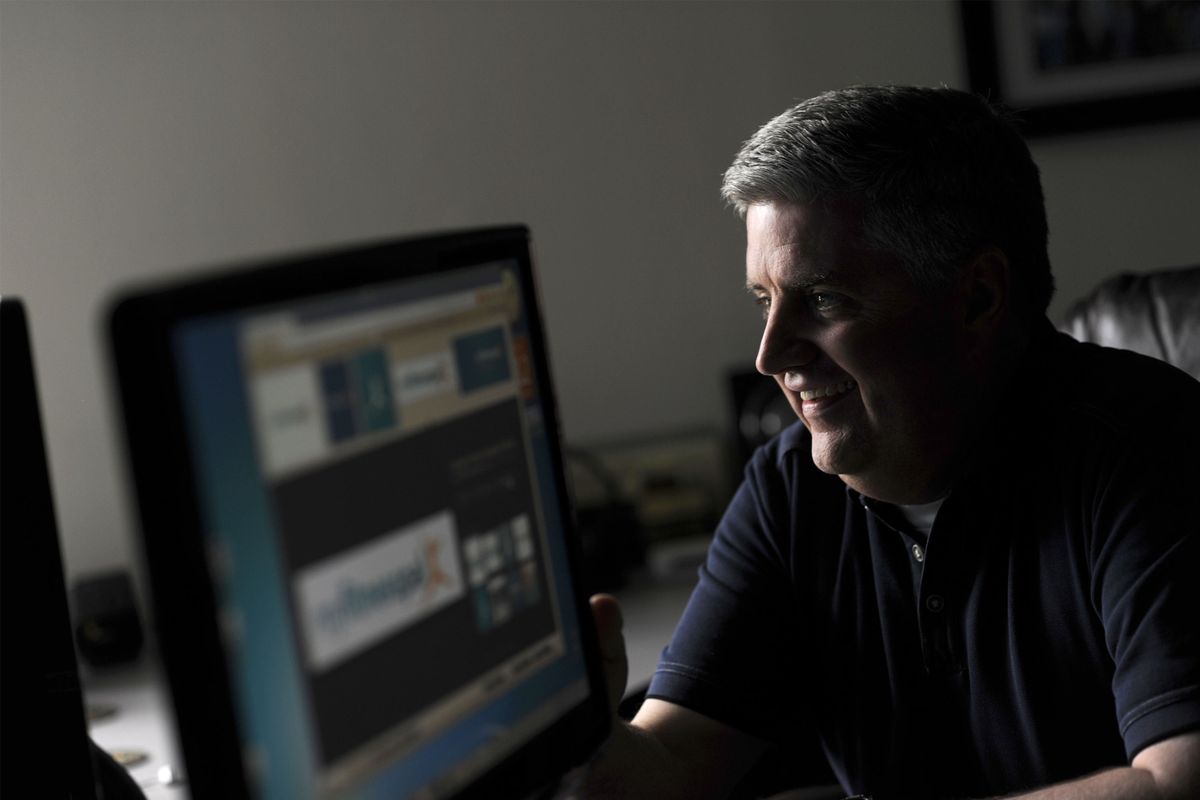Uses technology to track input, output

Mike Kennedy, 44 Pounds lost: 60-plus
Mike Kennedy, 44, is fond of pizza and bagels, and, although it’s been a while since he lived in Texas, something tantalyzingly called Snuffer’s cheddar fries.
But he’s also a fan of technology – which he found offered useful information and invaluable perspective as he dropped between 60 and 70 pounds from his 5-foot-7 frame since September 2011, when he weighed 244 pounds.
In his eighth year on the Coeur d’Alene City Council, as the president of an Internet company, and, oh, as the father of seven children, Kennedy was crunched for time.
“Ninety percent of my meals came out of a 3-by-2 square box while driving,” he said.
But looking “sick, red-faced and overextended,” Kennedy knew he had to take responsibility for what he ate. He was on blood-pressure and cholesterol medications. It hurt to get out of a chair, he groaned to get out of bed, and he had to stop tossing around a ball with his kids – now ages 4 to 17 – after 10 minutes.
Feeling much better now, he can track his progress down to the calorie consumed and step taken. And, with more weight to lose, he continues to use data he collects using his pedometer and another armband device that tracks his physical activity, a smartphone app he syncs with a website, and spreadsheets he built on his own.
Recently, an Excel chart showed two lines, each going in the wrong direction: Too many calories eaten, and too few calories burned. That aligned with a leveling off of his weight loss. It also offered a long-term view. In the past, Kennedy tried the Atkins diet and other tactics to lose weight.
“When I hit a setback, my response was ‘This is not doable. I cannot make it work. Back to Taco Bell,’ ” Kennedy said. “But having this little spreadsheet as my governing deal – it says, ‘You know what, look at two years of it. That weight loss says you can do it.’ ”
Kennedy uses the MyFitnessPal app and site, which let users input details – using a food item’s barcode, when available – about what they eat and how they exercise. Kennedy uses it to track his oatmeal and air-popped popcorn as well as his Fourth of July beers and his bagels with cream cheese.
He enters data from his pedometer and armband device into a spreadsheet, and checks it to gauge his food and excercise for the day and adjust accordingly. If his spreadsheet shows he’s only taken 4,000 steps in a day, and his goal is 10,000, maybe he makes a couple of business calls on his cellphone while walking around his office building.
“It may feel like you have to be a total geek to do this,” Kennedy said, “but it really is not hard.”